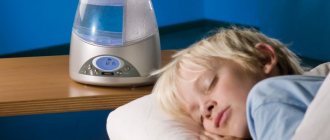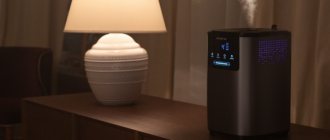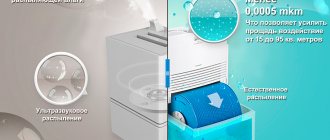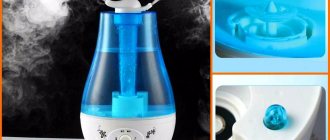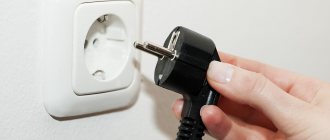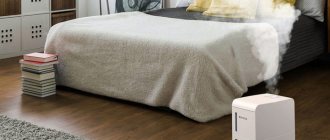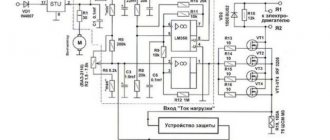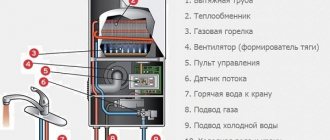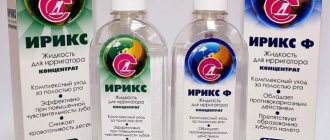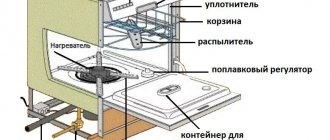The level of air humidity greatly affects your well-being. During the heating season, air flows from radiators and electric heaters mercilessly dry out the already dry air. It’s difficult to be in such an atmosphere, hard to breathe and almost impossible to work, don’t you agree? People with colds and allergies suffer even more, as the irritated mucous surface of the respiratory tract and eyes becomes very sensitive to air quality.
Fortunately, these problems can be solved with the help of an ergonomic air humidifier, which quickly replenishes the amount of moisture missing in the microclimate. However, like any equipment, this device requires careful maintenance. High-quality water suitable for the device will not only extend its service life, but will also have a beneficial effect on the health of household members.
In this material, we will tell you what kind of water to pour into a humidifier, look at the types of this technique and the principles of its operation, and find out how to independently prepare an acceptable liquid for refilling at home.
Why is air humidity important?
Humidity is one of the key characteristics of indoor air quality. According to sanitary standards, the acceptable level of relative humidity in a room in the warm season is 30-60%, in the cold season - 30-45%.
For children, doctors recommend raising this value to 50-60%, since a young developing organism is more sensitive to air parameters. We recommend that you familiarize yourself with the pros and cons of using a humidifier for your child.
To measure humidity, a special device is used - a hygrometer. However, purchasing it for home use is not entirely advisable. A much more profitable purchase would be a wireless weather station, which, in addition to air temperature and atmospheric pressure, also shows the level of relative humidity. Advanced models display information not only about weather conditions outside the home, but also analyze the microclimate in the room itself
The level of air humidity quite clearly affects the state of the body:
- Excessively dry air becomes a companion to long-term respiratory diseases - the depleted mucous surface cannot resist viral or bacterial infection. Therefore, the recovery process is delayed, and undesirable symptoms in the form of a runny nose and cough manifest themselves even more clearly.
- Low humidity makes breathing difficult . Due to lack of oxygen, dizziness and other ailments may occur. It is extremely difficult to concentrate on work in such an atmosphere.
- Skin and hair are the first to suffer from dry air, losing their own moisture . The surface of the eyes also becomes dry, causing the person to experience discomfort.
Additionally, dry air can cause damage to wooden furniture, various finishing materials, musical instruments, and negatively affect indoor plants. During intensive operation of heating devices, the humidity level drops to at least 20%. To avoid these problems, you need to buy a suitable model of humidifier and fill it with high-quality water.
Care instructions
A device that is an air humidifier with aromatization is preferable to conventional models. But it is worth remembering that it is advisable to wash the equipment after each use, to avoid the formation of harmful bacteria in it. It is also important that aromatic oils should be chosen with special attention. Essential oils can have both positive and negative effects.
We must not forget about individual odor intolerance, possible allergic reactions and more. The use of a device with aromatization must be careful; negative reactions in the form of dizziness, irritability, even nausea are possible; there are also more unpleasant manifestations. The fault lies largely not with the device, but with inept use. Oils should be added in moderation; advice should be given as to which ones can be added and which ones cannot.
Many odors, despite their pleasantness, can cause rejection by the body if constantly inhaled. Any flavoring can cause harm if used excessively. Moderation is one of the key factors in use.
No less important is the choice of which aromatic oils to use for the home. Preference in recommendations for use is given to chamomile, lemon, anise, lavender, cloves, fir, peppermint, sage and others. But this does not mean that you can add these oils as much as you like without learning your personal tolerance to their smell. No less important will be the opinion of relatives and people living together. Supplements can cause delight for one person and complete rejection for another person.
Therefore, aromatherapy should be the key to solidarity. After all, with the abundance of options, there is always a solution. It is advisable to add an essential oil to your humidifier that everyone will enjoy. It is recommended to mix several types of oils to obtain a richer aroma. Considering that hundreds of thousands of scent combinations can be added and essential oils of different properties can be used, it is easy to find the perfect compromise. The main thing is to observe moderation and be careful.
Ways to check air humidity levels
The best way to check is to use a hygrometer or weather station that reads information indoors.
However, if such equipment is not available, you can approximately calculate the humidity level using an ordinary glass of water .
The method of checking the air humidity level using a glass will not give specific percentages. However, in this way you can clearly find out whether the microclimate in the room is sufficiently humid
A glass glass must be filled with cold water and placed in the refrigerator so that the temperature of the liquid drops to approximately 3-5 degrees Celsius. After this, the container is installed in the room at the maximum possible distance from the heating radiators.
If the glass becomes covered with condensation that dries within five minutes, the humidity in the room is considered low. Average humidity is indicated by the persistence of condensation on the walls of the glass even after five minutes. If the glass is covered with small streams and drops, the level of humidity in the room is increased, there is no need to buy a humidifier.
Types of humidifiers and their functioning
Manufacturers offer extremely ergonomic and functional models that work on slightly different principles. What exactly needs to be poured into the humidifier fundamentally depends on the type of equipment. There are several types of such devices currently available on the market.
Type #1 - steam humidifiers
Steam humidifiers evaporate water through natural heating processes. The liquid is brought to a boil and then turns into steam.
These are the most effective models, however, they are not without certain disadvantages, among which are:
- high energy consumption;
- the need to control the level of moisture.
However, some modifications can even be used as an inhaler if the kit includes a special nozzle.
The working principle of a steam humidifier is shown in the diagram above. The design may include a separate compartment for oils. This allows you to make the air not only more humid, but also fragrant. Additionally, some essential oils, such as tea tree, have antibacterial properties that can neutralize airborne pathogens
A significant advantage of such a humidifier is the device’s low demands on water quality, since any clean liquid is suitable for it: artesian, spring, demineralized or distilled. However, it is worth remembering that the generated steam will be inhaled by people, so you should not fill the humidifier with plain water from the public water supply.
Type #2 - cold type humidifiers
Traditional cold-type humidifiers require special cartridges that saturate the blown air with the necessary moisture. Such models are filled with liquid, which the built-in fan drives through the cleaning unit.
Cartridges are extremely susceptible to clogging, so distilled water, free of any impurities, must be used for them.
The diagram shows a cold-type humidifier device. In addition to the main components, the device can be equipped with an air ionizer, an additional antibacterial filter or even an ultraviolet lamp, which also fights microorganisms
However, the cartridge still requires regular replacement: on average, it is updated at least once a quarter. If you do not use distillate, the cartridge will partially remove impurities of heavy metal salts and make the water softer, but will quickly become unusable.
Type #3 - ultrasonic humidifiers
Ultrasonic models produce moisture due to mechanical vibrations on a special membrane. Water entering this unit is split into fine particles, which are carried away by the air flow generated by the fan. The process is carried out without heating, however, along with water, any impurities contained in the liquid are split into fractions.
Therefore, although the ultrasonic humidifier is extremely convenient and productive, the device remains the most sensitive to water quality. Only a distillate that does not contain minerals or unwanted metals is suitable for it.
We discussed in more detail the features of ultrasonic humidifiers, their pros and cons in this material.
The figure shows the structure of an ultrasonic humidifier. In addition to the membrane, the device may have additional cartridges and coarse water filters, which improve the quality of the generated steam
The most primitive and least demanding of water are spray humidifiers, which simply spray tiny drops of water into the air. Any purified water is suitable for them, but do not forget about its characteristics, since microdroplets will get into the lungs.
Another type of humidifier is equipment with an air purification function. We talked more about purifying humidifiers in our next article.
Selection of water for humidifiers
- “Cold” humidifiers use demineralized or distilled water. With this approach, the humidifying cartridge does not become clogged so quickly, and the frequency of its replacement is significantly reduced. If distilled water is not used for the humidifier, an additional softening cartridge is installed, which reduces the concentration of hardness salts.
- In steam installations that operate on the principle of heating water in an electric kettle, it is important that scale does not form. This means you need a distilled or bottled product. Boiled liquid will not work here, because... When exposed to high temperatures, only microorganisms die, but mineralization and hardness salts do not disappear.
- Water for an ultrasonic humidifier must be distilled and free of minerals. This is due to the fact that when exposed to sound vibrations of ultra-high frequencies, liquid particles are split into tiny particles. They penetrate the lungs. If there is rust, chlorine residues, or debris in the water, they also settle in the body. Therefore, the quality of the liquid directly affects your well-being.
Distilled water is the purest filler for a humidifier, but also the most expensive. When using it, the white coating does not form as intensely. As an alternative to distilled liquid, you can pour process water into the humidifier to refill car batteries.
Attention! You can prepare water suitable for refilling the humidifier yourself. To do this, the tap liquid is lightly boiled for a quarter of an hour at a temperature of 100°C. In this case, calcium salts precipitate. The cooled and settled product is passed through a household jug-type filter. After thermal and filtration treatment, the output is water without chlorine and freed by 20-30% of iron, magnesium and calcium salts.
Water requirements for a humidifier
As it becomes clear from the above, the degree of purification and demineralization of water suitable for a particular humidifier depends on its type. Most often, manufacturers indicate this information in the device data sheet or instructions.
However, if you plan to pour regular bottled water into the device, it is worth remembering that its particles will enter the body practically unchanged. If the quality of the liquid is poor, this can cause health problems.
Water has a lot of indicators, but for a humidifier the most significant is hardness.
There are two types of water hardness:
- temporary is characterized by the presence of magnesium and carbonate salts;
- constant - the presence of non-carbonate, for example, chlorides or sulfates.
Water with high temporary hardness forms a carbonate salt precipitate when boiled. This is what we see on the surface of pots and electric kettles after long-term use.
Scale on dishes is the main indicator of excessively hard water. You should definitely not use such a liquid for a humidifier.
Its softness directly depends on the temporary hardness of water. Constant hardness or calcareousness indicates the degree of mineralization of the liquid and characterizes its drinking qualities.
Temporary hardness can be partially reduced by boiling or freezing. Additionally, high temperatures will destroy viruses and pathogens. However, if your humidifier requires demineralized water, simply boiling it will not help.
Water hardness is calculated in degrees of hardness °W (°W = 1 mg-eq/l = 1/2 mol/m3):
- soft has indicators up to 2 °F;
- medium hard – 2-10 °F;
- hard – more than 10 °F.
Normal water hardness from a central water supply source should not exceed 7 °F, in some cases – 10 °F. However, already at a level of 4-5 °F, users will observe scale on dishes, a film on the surface of freshly brewed tea, stains on dishes, etc.
Therefore, you should absolutely not pour such water even into an air humidifier that uses undistilled water. The best solution for any humidifier is distillate.
What kind of water to put in humidifiers
The performance of the device and the process of humidifying indoor air directly depend on the quality of water.
Each specific humidifier requires a specific approach to the liquid.
Before use, be sure to read the instructions from the manufacturer. Some models have their own nuances in operation.
For example, water getting into the ventilation duct will lead to breakdown in most ultrasonic ones (for example, in the popular Boneco Air-O-Swiss AOS U200 model, etc.).
The manufacturer of the Timberk THU UL 03 A1 model recommends filling the tank with clean water every day, not adding essential oils, detergent, or warm water above 40 ° C.
A different fluid composition will affect internal parts and cause malfunction.
Basic instructions
- Before filling the reservoir with water, turn off the power supply to the humidifier and remove the power plug from the outlet.
- Use only clean, cold tap water. If you have hard water at home with a high content of mineral salts, use filtered, distilled water.
- Do not turn on the humidifier if there is no water in the tank
- Pour cold water into the tank no more than 40 °C (these requirements are set by most manufacturers of ultrasonic humidifiers; steam humidifiers have a limit of no more than 60 °C. The exact temperature can be found in the device passport.
- Add flavorings strictly according to instructions.
There are models with aromatization, there is a bath (capsule) for aromatic oils. The manufacturer's instructions prohibit adding essential oil without this function. Ultrasonic devices are especially sensitive to this.
Features of distillate preparation
In order not to constantly buy distilled water for a household humidifier, you can prepare it yourself. This distillate is suitable for all types of humidifiers and will be completely safe for household members.
However, the process is quite lengthy and does not make it possible to obtain too large a volume of liquid at one time.
To distill water at home, it is not necessary to use a special apparatus. A saucepan with a concave lid is perfect for these purposes.
To begin with, the water must be allowed to stand for 6-8 hours. During this time, volatile impurities, such as hydrogen sulfide and chlorine, will be naturally removed, and heavy metal salts will sink to the bottom of the dishes used. It is this lower layer of liquid that must be carefully pumped out with a tube, removing about a third of the water.
After this, the water is ready for the distillation process, which is carried out in the following way:
- The settled water is poured into an enamel pan, the volume of which is twice the volume of the prepared liquid.
- A grate is fixed above the surface of the water, on which a container is installed to collect the distillate.
- The pan is covered with a concave lid, with the dome of the lid directed towards the collection container.
- After this, the evaporation process itself begins. After boiling, the water is converted into steam, which, settling on the surface of the lid, turns back into water and flows into the prepared container.
To speed up the distillation process, it is better to constantly cool the surface of the lid.
Ice works great to cool the lid. After contact with a cold surface, steam is quickly converted into purified water
After preparation, distilled water must be cooled and frozen. Part of the liquid that does not freeze must be drained before use.
Making distilled water
It is recommended to boil and settle tap water before pouring it into the device.
Manufacturers of modern models of humidifiers recommend using only distilled water obtained by purifying the original product. During the distillation process, organic and inorganic impurities evaporate from it, resulting in a liquid practically devoid of salts. To produce it at home, you will need to master a simple technology associated with heat treatment. But first, ordinary tap water should be allowed to stand for about 7-12 hours. During this time, almost all inorganic impurities will precipitate out of it, which will facilitate the subsequent distillation procedure.
To evaporate the working fluid, you will need to perform the following simple operations:
- Fill a large enamel container with water about halfway.
- A deep plate is placed in it, slightly smaller in size than the diameter of the main container.
- Cover the pan with a lid turned upside down and place it on an open fire on a gas stove.
- As soon as the water boils, pieces of ice, previously prepared in the freezer, are placed on the inverted lid.
When water boils, the resulting steam will begin to rise and settle on the cooled outside lid, forming condensation. As it accumulates, it will begin to flow in the form of drops into a plate placed below and floating in the water. This liquid will be distilled water, which is then poured into the filling container of the humidifier.
How to add water to a humidifier?
Filling the humidifier with water always follows the instructions for the device. If documents for equipment are lost, you can search for the necessary information online or on the manufacturer’s official website.
However, there are general principles for replacing water in the device that all owners should follow:
- Any remaining liquid in the reservoir must be completely drained.
- The water container is thoroughly cleaned and washed.
- If there is scale deposits on the walls, it must be removed with a weak solution of vinegar.
Such measures allow you to maintain maximum cleanliness of the humidifier tank, on which the safety of using the device largely depends.
A dirty filter must be replaced, since continued use of a clogged membrane is harmful to health and can cause damage to the device.
If the container is not washed from dirt or mold, the humidifier must not be started. Spores and microorganisms from a humidifier can become airborne and cause certain diseases.
Signs of using poor quality water
You can understand that the water placed in the tank does not meet the requirements of the device by the following signs:
- the container smells unpleasant;
- the remaining water has changed color or become cloudy;
- pockets of mold or green plaque have appeared on the walls;
- there is scale;
- An unaesthetic white coating appeared on the furniture in the room.
Traces of scale indicate increased temporary water hardness, which can be removed by pre-boiling. Mold and green growth indicate the presence of spores and bacteria in the water, which can be harmful to health. Plaque on furniture and other surfaces most often appears after using ultrasonic humidifiers, during which, in addition to water, salts are also broken down.
All these facts indicate that the selection and preparation of water for a humidifier needs to be approached more responsibly.
How to humidify the air without a humidifier?
Methods for increasing the humidity level in a room without using a special humidifier are quite primitive, but still remain quite effective. These methods are suitable for the user if the device suddenly becomes unusable.
Let's take a closer look at these methods, and also recommend that you familiarize yourself with the ten most popular models among users so that you can choose a new humidifier to replace the broken one.
On a trip, when it is inconvenient to take additional equipment with you, knowledge about traditional methods of increasing humidity will also not be superfluous.
To increase the level of air humidity, you can simply fill the pan with water and, after boiling, remove the lid, leaving the liquid to boil over low heat. However, it is worth monitoring the water level in the container to avoid fire hazards. To save gas, you can simply bring the water to a boil and then leave the pan on the windowsill or table.
Placing containers of water near heating appliances will also increase the humidity in the room. To increase the effectiveness of such natural humidifiers, choose dishes with a wide neck, as this will increase the area of evaporation.
Drying things after washing right in the room near the radiator also increases humidity. However, it is worth remembering that clothes must be thoroughly rinsed from detergents, since their components will also enter the air and lungs during the evaporation process. Additionally, radiators can be covered with damp towels, which will also increase the relative humidity.
Indoor plants also have a beneficial effect on humidity levels. The most famous and unpretentious of them is chlorophytum. This lush flower cleanses the air efficiently and improves the microclimate.
Ventilation and wet cleaning are the key to strong immunity and a way to neutralize the chances of getting a cold. These same mandatory measures improve the internal microclimate in the room and increase humidity to the required standards.
Opening the bathroom door after taking a shower is another way to increase the humidity in the apartment. Evaporation from the bathroom will move to other rooms, stabilizing dry air. We looked at more ways to humidify the air without a humidifier in the next article.
However, it is worth remembering that all these artisanal methods of increasing humidity can play an unpleasant joke on your health. If the humidifier evaporates high-quality purified water without unwanted impurities and pathogens, then in the methods described above, any bacteria or viruses, as well as heavy metal salts, chlorine particles and other harmful elements contained in ordinary water, can enter the internal atmosphere of the house.
Types of humidifiers
Whatever the type of humidifier, it is based on supplying water to the room in one or another state of aggregation - steam or liquid. Water for an air humidifier is the main component, without which the use of the device becomes impossible. But the way it is supplied depends on the type of device, which are:
- using the principle of natural evaporation, or “cold”. In this device, behind the container with water there is a fan, which performs 2 functions - increasing the rate of evaporation of water and artificially pumping it into the air of the apartment. Before evaporation, water from the container is supplied to a special filter, which is in a constant wet state. It retains natural contaminants and increases the evaporation area;
- steam. It is based on heating a liquid until it turns into steam, which is supplied to the room. The device is equipped with a humidity level meter - a hygrostat, which allows you to automate the supply of steam and reduce energy costs for heating the liquid;
- ultrasonic. They are based on the cavitation method - the boiling of water at room temperature, which occurs as a result of the conversion of ultrasonic vibrations. A fine suspension of water particles is supplied into the air using a fan;
- spray They are based on periodic spraying of small splashes of liquid, which is not subjected to heating or any other type of preparation before serving. .
Separately, we can mention such an increasingly popular device as an air washer. It combines the ability to humidify the air mass and clean it. In this case, the air comes directly from the room and undergoes purification with water, is saturated with it and, already purified, is supplied back.
But regardless of the principle of operation of the humidifier, the design of the device implies the presence of filters. They retain a significant part of the contaminants that are present in the water and in the forced air. Therefore, the cleaner the liquid, the less often you will have to change expensive filters.
Conclusions and useful video on the topic
The TOP 7 best air humidifiers were compiled by the author of the video below. The review describes the key characteristics of the models, their advantages and disadvantages:
The process of preparing distilled water using a saucepan and a lid is clearly shown by the creator of the following video:
The difference in the results of using an ultrasonic humidifier filled with distilled and ordinary water was revealed by the author of the video below. Using a special device, the content of undesirable impurities was recorded when using ordinary liquid and their low level when pouring distillate:
An air humidifier is an almost indispensable device for the heating season, when the humidity level in the room drops to critically low values. Maintaining a favorable microclimate in housing will help avoid a number of health problems, improve the general condition of the body and the performance of people. Therefore, it is so important to fill the device’s reservoir with high-quality, properly prepared water, on which not only comfort, but also a person’s well-being will depend.
What type of humidifier do you use and what kind of water do you fill in the tank? Share your experience of using the humidifier with other users. If you have questions or want to supplement the above material with useful information, leave your comments in the special block located below this publication.
Water or water infusion
Poor quality water can cause the release of calcified compounds into the air.
Depending on the type of model, the question is decided: what kind of water should be poured into the humidifier?
- ultrasonic models are filled with a distilled product without any additives;
- You can pour filtered herbal infusions into steam devices;
- There are humidifiers with a special autonomous compartment (for aromatic additives).
